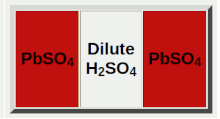Uh clueless, but first rule of recycling batteries is discharging them, I'd lack the cojones to try and touch it charged i seen enough lithium explosions.
"First rules" and basic rules are there for a reason. Workers do not understand all the aspects of the tasks and processes involved with the risk becoming a real threat.
You can get seriously hurt when shorting a car battery. An adjustable wrench melts in an instant and molted metal drops can be flying around. The electrical explosion that could follow can throw acid your way.
The chance of that happening depends on factors, some can be controlled, some not, That's why employers choose the safe side, do no do it!, (basic rule) No need to explain the physics or provide scientific studies; employees may not interpret it properly and make a wrong decision. Just say NO!
Lithium and lead are quite different. Lithium battery fires can not be put out. We saw that with a recent ship burning near our coast. Lead does not burn, nor does H2SO4, as far as i know.
But yes, thanks for the addition, hence my remark about safety.
A little disclaimer: all activities should be risk assessed and have some control measure to reduce risks to an acceptable level BEFORE execution. The identified risks should be taken into consideration if execution of the activity is advisable or not.
Individuals are responsible for their own actions. Employers are responsible for the safety of their workers at work.
Edited for correct word.











































































